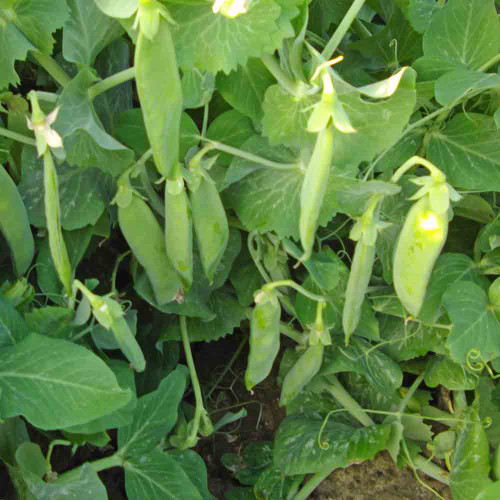Cascadia Sugar Snap Pea Seeds - (Pisum sativum)
- SKU:
- V1086
- Seed Count:
- Approx 100 seeds per pack
- Type:
- Edible Pod/Snap
- Days to Maturity:
- 58-70 days
- Organic:
- Yes
- Days to Germination:
- 5-10 days @ 45-75F
- Light Preference:
- Full sun to partial shade
- Plant Spacing:
- 1-2"
- Status:
- Heirloom, Non-Hybrid, Non-GMO seeds
Description
Cascadia Sugar Snap Pea
Tender deep green fiber-less 3" succulent pods with a super sweet flavor. Short, 2-3' vines yield an abundance "absolutely smothered in peas" of dark green 3" pods that are thick, juicy, and very sweet.
Grower's delight; tender and sweet as well as good yields. Resists powdery mildew and pea enation mosaic virus.
Both peas and pods are unusually sweet, steamed, stir fried, sautéed, frozen or fresh. Most of them end up being eaten fresh right off the vine! Rave reviews from specialty market growers for high prices they command. Sugar snap peas are top sellers in specialty markets coast to coast.
History
Heirloom peas or garden peas originated in middle Asia, from northwest India through Afghanistan and adjacent areas. A second area of development lies in the Near East, and a third includes the plateau and mountains of Ethiopia.
Heirloom peas were one of the most widely grown vegetables of northern Europe during the Middle ages, as their description and cultivation was evident in almost every early gardening or agricultural book of any language in middle and northern Europe.
Uses
Green peas are used fresh, cooked, frozen or canned. Dry peas are cooked whole or split.
Growing Tip
The most important thing to know about growing peas is that they cannot stand hot weather. If you live in a warm climate, fall and even winter planting can be fine. Some southern gardeners sow in fall and let the seeds lie dormant in winter so that they can sprout as early as possible in the spring in order to beat the heat. Remember peas can be planted in early spring and be one of your first crops producing.
Learn More
From the soil to the seed to the food you eat - we'll help you grow your best garden!













